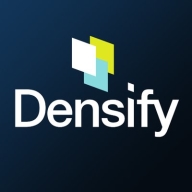

Densify and NetApp Cloud Insights are competing products in the cloud management and optimization space. Densify holds an upper hand in cost management and resource optimization, but NetApp Cloud Insights is preferred for its comprehensive monitoring and troubleshooting capabilities.
Features: Densify specializes in automated instance rightsizing, predictive analytics for cloud spend and performance optimization, and empowering ITSM/EA applications with integrated data. NetApp Cloud Insights offers features like robust monitoring, efficient resource tracking, and topology visualization, which excel in providing detailed infrastructure visibility and advanced analytics for performance issue notifications.
Room for Improvement: Densify can enhance its capability in addressing multi-tiered infrastructure issues and broaden integration with different vendors. Improvements in the interface for non-technical users and more detailed network monitoring could provide additional benefits. NetApp Cloud Insights could benefit from making its deployment less complex, improving real-time data processing, and reducing operational costs.
Ease of Deployment and Customer Service: Densify features a straightforward deployment process and proactive customer service, helping seamlessly integrate into existing workflows. NetApp Cloud Insights, while offering knowledgeable support, demands a more complex deployment due to its depth in analytics, which may slow down initial setup despite its advanced functionalities.
Pricing and ROI: Densify is recognized for its competitive pricing and high ROI, benefiting from efficient resource use, which appeals to budget-conscious organizations. NetApp Cloud Insights comes with higher upfront costs, justified by its extensive capabilities that deliver significant ROI through improved operational efficiency and reduced downtime, catering to organizations valuing comprehensive long-term benefits.


Densify is a hybrid cloud and container resource management platform that makes workloads self-aware of their precise resource requirements and automates the resource management and selection process. This solution helps you control your cloud spend and also helps your apps perform and scale better. Densify enables you to match your cloud requirements with the optimal cloud supply. Additionally, Densify is the only technology that leverages patented, predictive machine learning-powered analytics to perform advanced modeling of workload patterns, and provide precise optimization directives. It is ideal for cloud engineers, container platform owners, and IT finance.
Densify works by:
Densify Features
Densify has many valuable key features. Some of the most useful ones include:
Densify Benefits
There are many benefits to implementing Densify. Some of the biggest advantages the solution offers include:
NetApp Cloud Insights is an infrastructure monitoring tool that gives you visibility into your complete infrastructure. With Cloud Insights, you can monitor, troubleshoot and optimize all your resources including your public clouds and your private data centers.
We monitor all Cloud Migration reviews to prevent fraudulent reviews and keep review quality high. We do not post reviews by company employees or direct competitors. We validate each review for authenticity via cross-reference with LinkedIn, and personal follow-up with the reviewer when necessary.